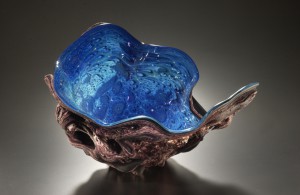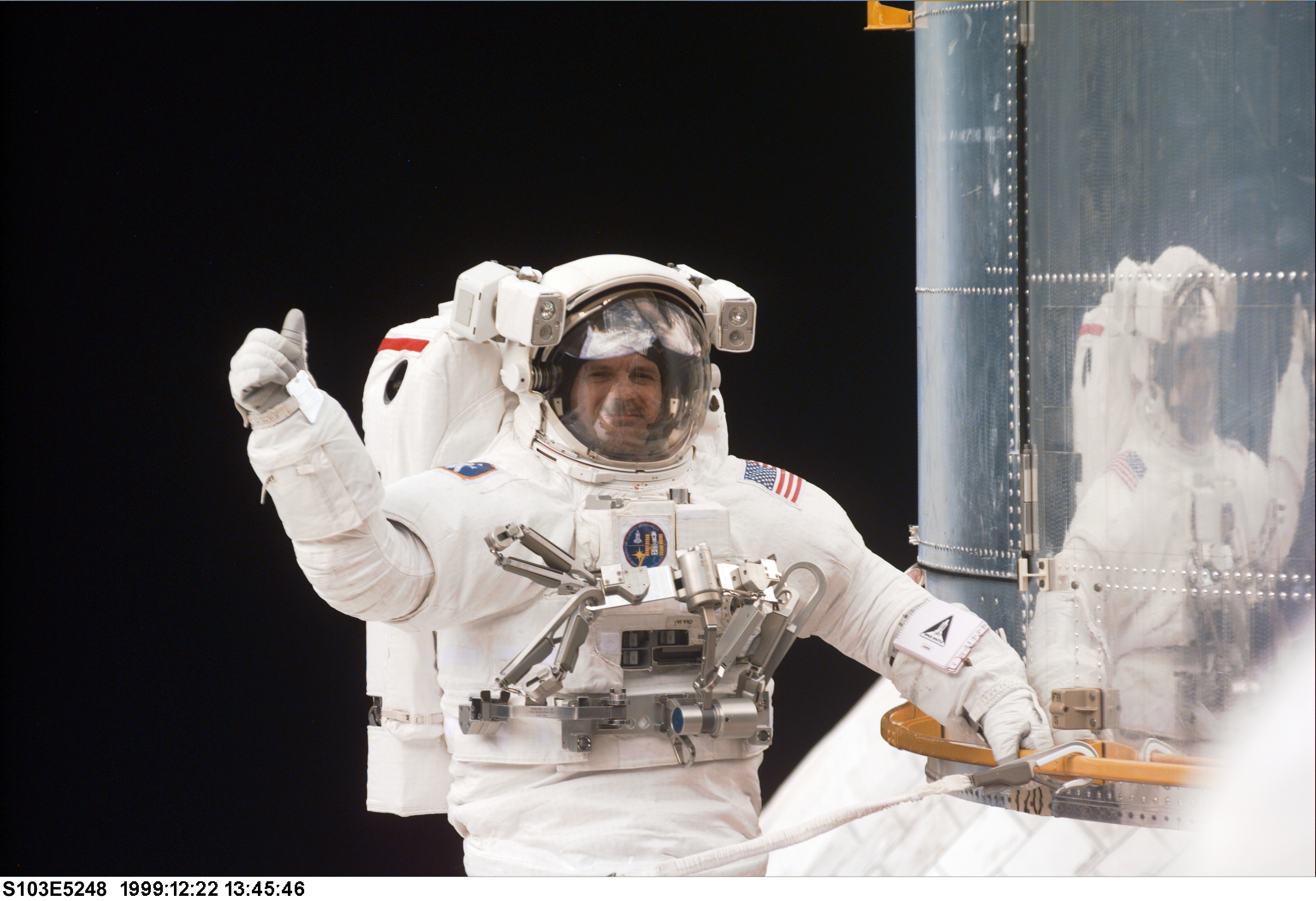
By Don Cohen
Josh Simpson has been creating planets for more than three decades. The cover photo of this issue of ASK shows detail from one of them.
He started in the mid-seventies when he was demonstrating glassblowing to eighth graders in Franklin County, Massachusetts, where he has his studio. He found that young teens quickly tired of seeing vases and bowls take shape, so he began making marbles they could take home with them. Then he happened to see Jim Lovell’s famous Apollo 8 “Earthrise” photo of the earth fromspace and the Apollo 17 “blue marble” picture of Earth floating in the blackness of space. The next day, instead of marbles, he began making planets—not known planets, but fantasy planets that might exist, he says, somewhere in the universe.
Since then he has made thousands of them, some less than two inches in diameter, others as large as fourteen inches. The 100-plus-lb. megaplanet at the Corning Museum of Glass is the largest glass sphere ever created by traditional blowpipe methods. Over the years, the planets have become more complex, the varied terrain of their landmasses dotted with sprawling cities and strange shapes that might be organic or might be structures designed by alien civilizations. Sometimes tiny satellites and spacecraft hover in their clear glass skies.
Simpson’s fascination with space and distant planets began when he was a young boy and read, by his own admission, an “inordinate” amount of science fiction. The real-life space program, which gave us a new view of Earth and the planets of our solar system, increased his enthusiasm and expanded his vision. Although he had been making glass planets for fifteen years before he met and married NASA Astronaut Cady Coleman, her experience has influenced his work. He pores over the thousands of images of Earth she has taken from the Space Shuttle and the International Space Station. Through Cady, he got access to photographs of the effects of micrometeor strikes on NASA’s Long-Duration Exposure Facility, a spacecraft that spent almost six years in orbit to provide data on long-term exposure to the environment of space. He began using a hydrogen torch to try to create a similar effect on some of his planets.
For Simpson, work on the planets (and on his tektites, with their rough, meteor-like exteriors and glowing inner colors) brings together his interests in space exploration, art, and science. The physics and chemistry of glassblowing are a challenge that, he says, “has focused my attention and held me spellbound for over forty years.” He works with a molten liquid at 2,100˚F that is shaped only by gravity and centrifugal and centripetal forces. At that temperature, it glows orange, its eventual colors “red shifted” by heat. He prizes the chemical interaction between different colors of glass that creates a beach-like third color at the border of his seas and landmasses. He likes the fact that he uses techniques that were developed by glassmakers in the ninth century to create his spaceships. And he has spent thousands of hours trying to approximate the color of Cherenkov radiation—the intense blue glow of nuclear fuel rods in their water bath. (So far, silver in a glassy matrix comes closest.)
For the rest of us, Simpson megaplanets are worlds to explore that suggest the yet-unseen wonders of space and give us at least a small taste of the experience of astronauts fortunate enough to look down on their own planet from orbit.
Write to the Author
- Contact Don Cohen
More Articles by Don Cohen
- In This Issue (ASK 42)
- Interview with Rüdiger Süß (ASK 42)
- Applied Knowledge: NASA Aids the Chilean Rescue Effort (ASK 41)
- Interview with Jill Prince (ASK 41)
- In This Issue (ASK 40)
- + View More Articles










